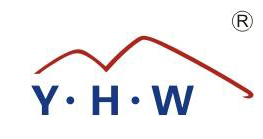The profiles and textures of metal roof panels play a crucial role in both the aesthetic appeal and the integration of the roof into overall architectural designs. Here’s how these aspects impact the visual and functional outcomes:
1. Aesthetic Appeal:
Profile Shape:
The shape of the metal roof panels can significantly influence the overall appearance of a building. Common profiles include standing seam, ribbed, corrugated, and flat panels. Each profile imparts a different visual style:
Standing seam panels, with their smooth, vertical lines, are often associated with modern, sleek designs. They offer a clean, streamlined look and are commonly used in contemporary architecture.
Corrugated panels are more traditional and industrial, offering a classic, textured appearance that’s often used in agricultural or rustic settings.
Ribbed profiles provide a more pronounced texture and can add a dynamic, dimensional effect to the roof, which may be favored in both industrial and commercial designs.
Flat panels provide a minimalist, smooth aesthetic that suits modern and high-end architectural designs.
Texture and Finish:
The finish applied to the surface of the metal panels, such as smooth, embossed, or textured, can dramatically change how the roof complements the building’s exterior. For example:
A smooth finish is often chosen for modern, clean designs and offers a more refined look.
Embossed or textured finishes can add a sense of depth and visual interest, making them suitable for projects aiming for a more unique or traditional appearance.
Some finishes also mimic natural materials, such as weathered steel or stone coatings, to blend with natural surroundings or to achieve a more organic aesthetic.
2. Integration with Architectural Design:
Architectural Style Matching:
The profile and texture of the metal roof can either complement or contrast with the building’s architectural style. For example:
Traditional styles like farmhouse or cottage may benefit from corrugated or ribbed profiles that echo the historical, rustic aesthetic.
Modern or minimalist designs often call for standing seam or flat panels with smooth, sleek finishes to match their clean lines and geometric forms.
Industrial designs may integrate ribbed or corrugated metal panels to enhance the building’s utilitarian appeal.
Color and Coating:
The color of the metal panels, influenced by the profiles and textures, can also impact the architectural harmony of the building. Light or neutral tones, such as whites, grays, or beige, typically suit modern and minimalist structures, while darker shades or earthy tones are used to complement rustic or traditional designs. High-performance coatings also allow for more color options and can contribute to how well the roof integrates with the overall aesthetic of the building.
Customization for Design Goals:
Some metal roofing systems allow for significant customization, enabling architects to tailor the profile, texture, and color of the panels to meet specific design goals. For example:
For green or sustainable buildings, the roof might feature panels that mimic natural materials or employ finishes that reflect heat, enhancing energy efficiency.
In high-end residential or commercial projects, bespoke panel designs can be chosen to align with a building’s unique architectural features.

3. Functionality and Aesthetic Synergy:
Visual Cohesion with Building Features:
The design of the metal roof panels needs to harmonize with other key architectural features such as walls, windows, and entrances. For example, a roof with sharp, angular profiles may work well with a building that has similar sharp design elements, while softer, curved profiles might suit a building with organic or flowing design features.
Impact on Building Scale:
The profile and texture can influence how the roof fits into the overall scale of the building. A large-profile panel might look imposing on a small structure, while smaller panels can create a more delicate, intricate effect for finer, detailed architecture.
4. Practical Considerations:
Durability and Aesthetics Over Time:
Textured finishes and profiles can not only provide aesthetic benefits but also increase the durability of the roof by hiding dirt, rust, or wear that may occur over time. In harsh climates, textures can help reduce the appearance of aging, while smoother panels may show marks or damage more readily.
Light Reflection and Shadows:
The profile and texture of metal roofing can create varying light reflection and shadows, which can enhance or detract from the building’s aesthetic effect depending on the angle of light. Textured profiles, for example, create shadow play, which can add depth and richness to the building’s visual appeal.




 English
English русский
русский Español
Español عربى
عربى















